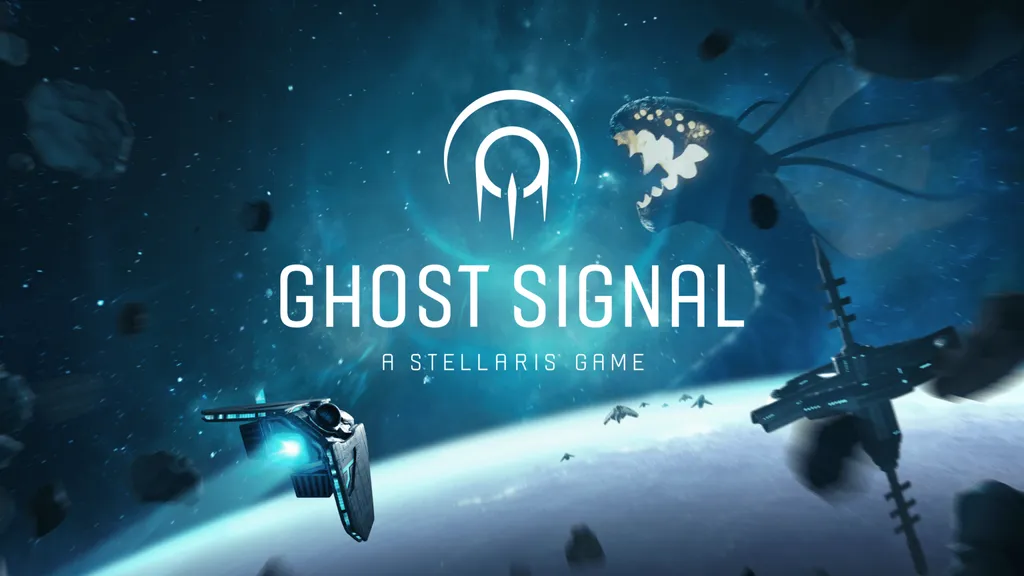Ghost Signal: A Stellaris Game arrives on March 23 for Quest 2. Alongside a hands-on preview, we sat down with Lead Designer Christopher Smith to learn more.
Grand strategy games never caught my eye like platformers or RPGs do, so I admit the original Stellaris flew past me. However, I’m fully aware that it’s often considered one of the best modern strategy titles, which leaves Fast Travel Games with much to live up to. A VR roguelite isn’t the first spin-off I’d think of, but Ghost Signal: A Stellaris Game is making the transition well.
We covered gameplay during our Ghost Signal preview, but the basics premise is that the game plays out through procedurally generated runs. Captaining a small ship called the Aurora, you’ll investigate the eponymous Ghost Signal, and paths split between different biomes with unique mission paths, eventually ending in a boss fight. You could choose a low-risk route with standard battles or tackle riskier options with special events, which offer better rewards like new ship parts. Every level takes place inside a diorama, keeping the action relatively contained.
Despite never playing the original Stellaris, Ghost Signal drew me in with its simplicity. Eventually, I beat the first boss, desperately trying to keep my ship alive before inevitably succumbing soon after. While I had some issues with text boxes appearing too close to me and accidentally being skipped, it was an otherwise enticing premise that looks pretty good on Quest 2. I’m intrigued to see what happens next.
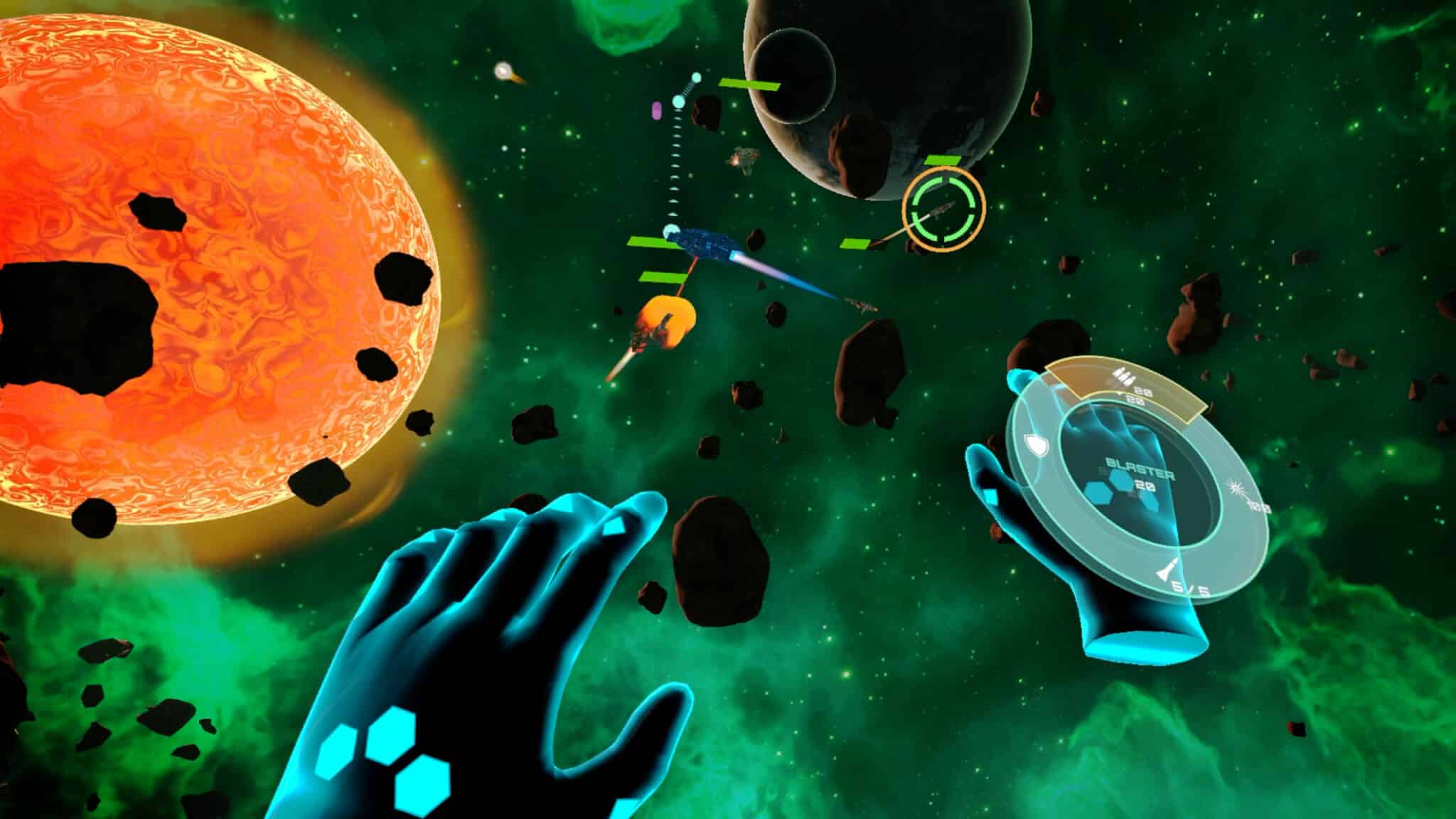
Back in January, I visited Fast Travel’s office and spoke with Lead Designer Christopher Smith, who answered a few of my questions. His passion for Ghost Signal was immediately evident.
“I think this has been my dream project,” he told me. “It sounds like I’m just saying it, but I’ve had so much fun developing this. I think we’ve created something truly unique. I know nothing else in VR or flatscreen that does what we do, which makes me very happy. I’m very proud of the team and what we have accomplished.”
I believe any genre can work in VR with the right team, though strategy games arguably aren’t a natural fit like FPS games. With that in mind, I queried why Fast Travel chose Stellaris for a VR adaptation.
“We’ve made several collaborations with Paradox, like [Wraith: The Oblivion – Afterlife] and Cities: VR, so [Stellaris] was part of that discussion. But we knew it would be difficult to translate the original grand strategy game into VR; there’s so many manuals. Everything can be done, but we found a more interesting angle was to zoom into that massive, wonderful universe, and do our own story in a setting at the edge of the galaxy.”
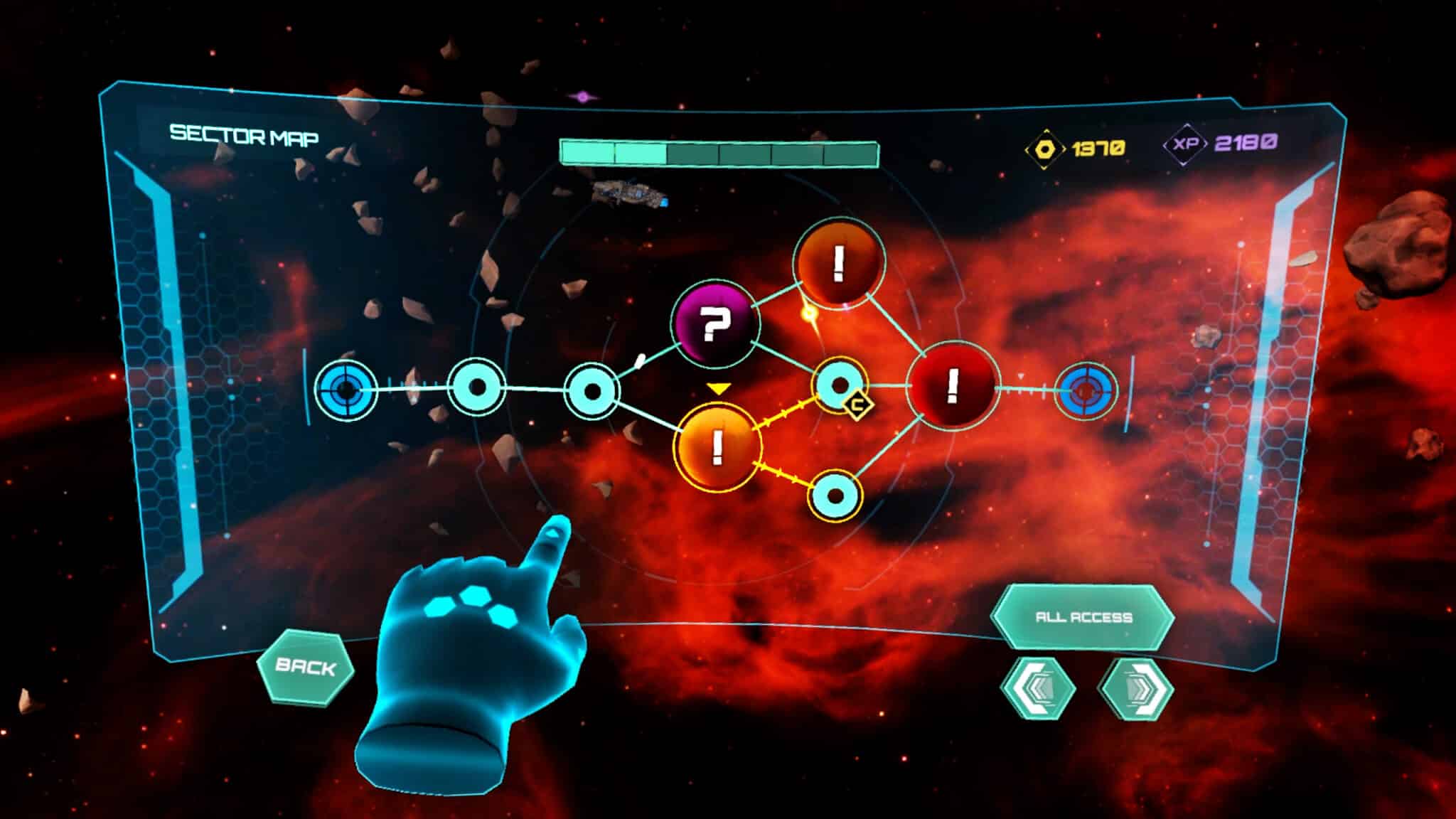
Following this train of thought, I then asked why the team made Ghost Signal a roguelite action game. Smith responds by admitting he’s a fan of the genre and tells me it “just sort of happened,” saying they want to let players explore space while comparing progression to flatscreen roguelites. “In Hades, you try to reach the surface. In Slay The Spire, you’re trying to reach the top of the spire. Here, you will reach the end of the gap in the universe to find this mystery signal. It felt like a nice fit.”
With all these changes, was it hard creating a tale that fits both the gameplay and the wider Stellaris universe? “It’s been surprisingly easy; it felt like a natural fit…” He’s evidently thrilled at how everything came together.
“The good thing with Stellaris is that it has this fantastic world with a lot of technology and species and is quite open. Any adventure can happen within the existing Stellaris universe.” He also confirmed that Fast Travel has worked closely with Paradox’s story and content designers during development.
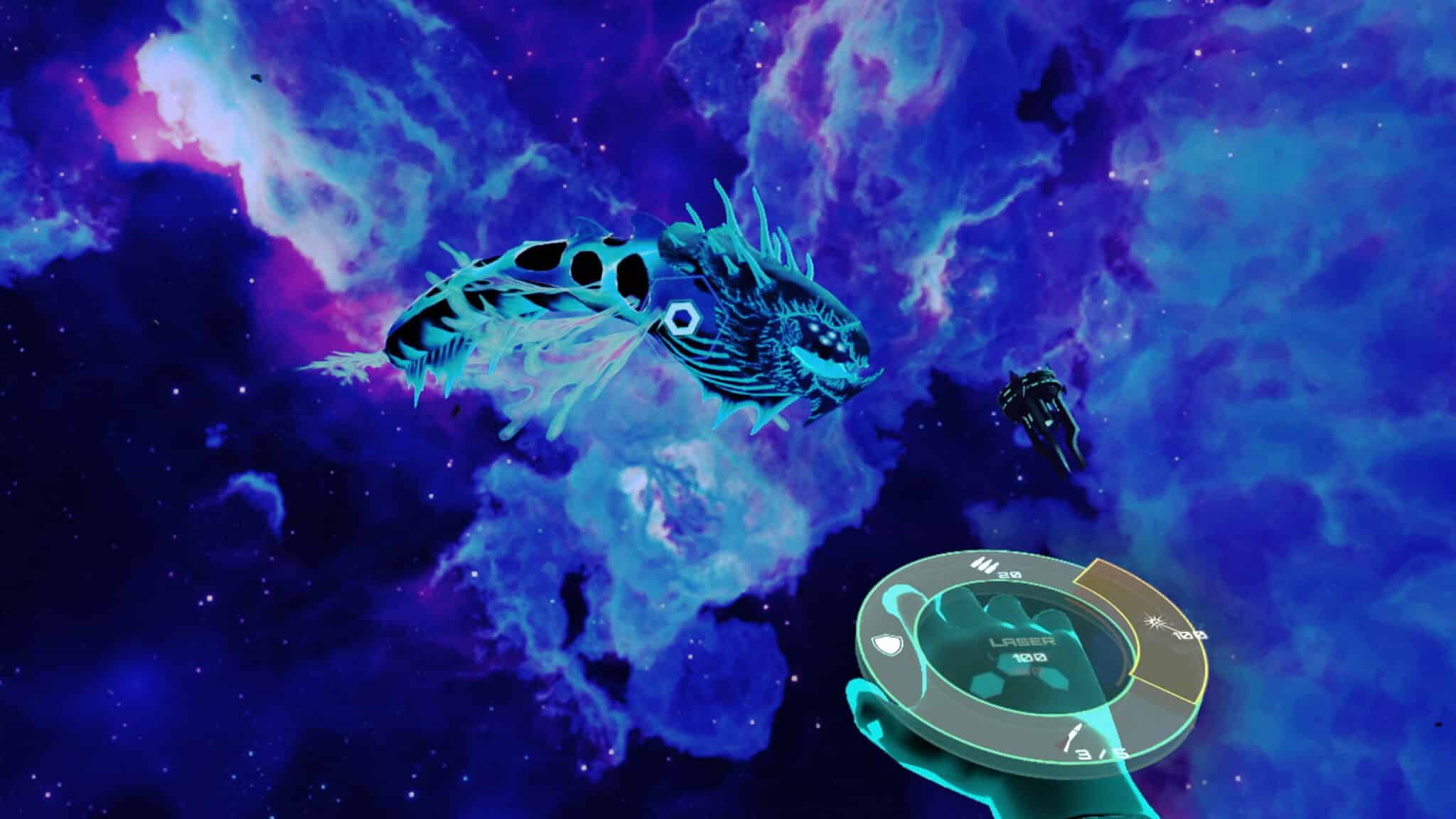
Unsurprisingly, Ghost Signal ties into the original game beyond sharing a universe, though Smith carefully avoids revealing any specifics. “There are strong links to certain events that happened in the original game, but it’s hard to elaborate on them without spoilers. There are quite a few twists and turns; there is more story than you can imagine.”
I then moved on to Ghost Signal’s hand-tracking support, which Fast Travel revealed last December. Turning your hands palm-up lets you access menus, dragging a closed fist allows you to move around your environment, while open-palm aiming will enable you to scan and pinch gestures to shoot. Smith explains that the team implemented support after conversations with Meta.
“They suggested incorporating hand-tracking into this game. It’s tricky with hand tracking because you can only do so much, which is why the ideal way of playing Ghost Signal will always be using the controllers. We have hand-tracking there for those who want to try it, you can judge for yourself, but it was a suggestion.”
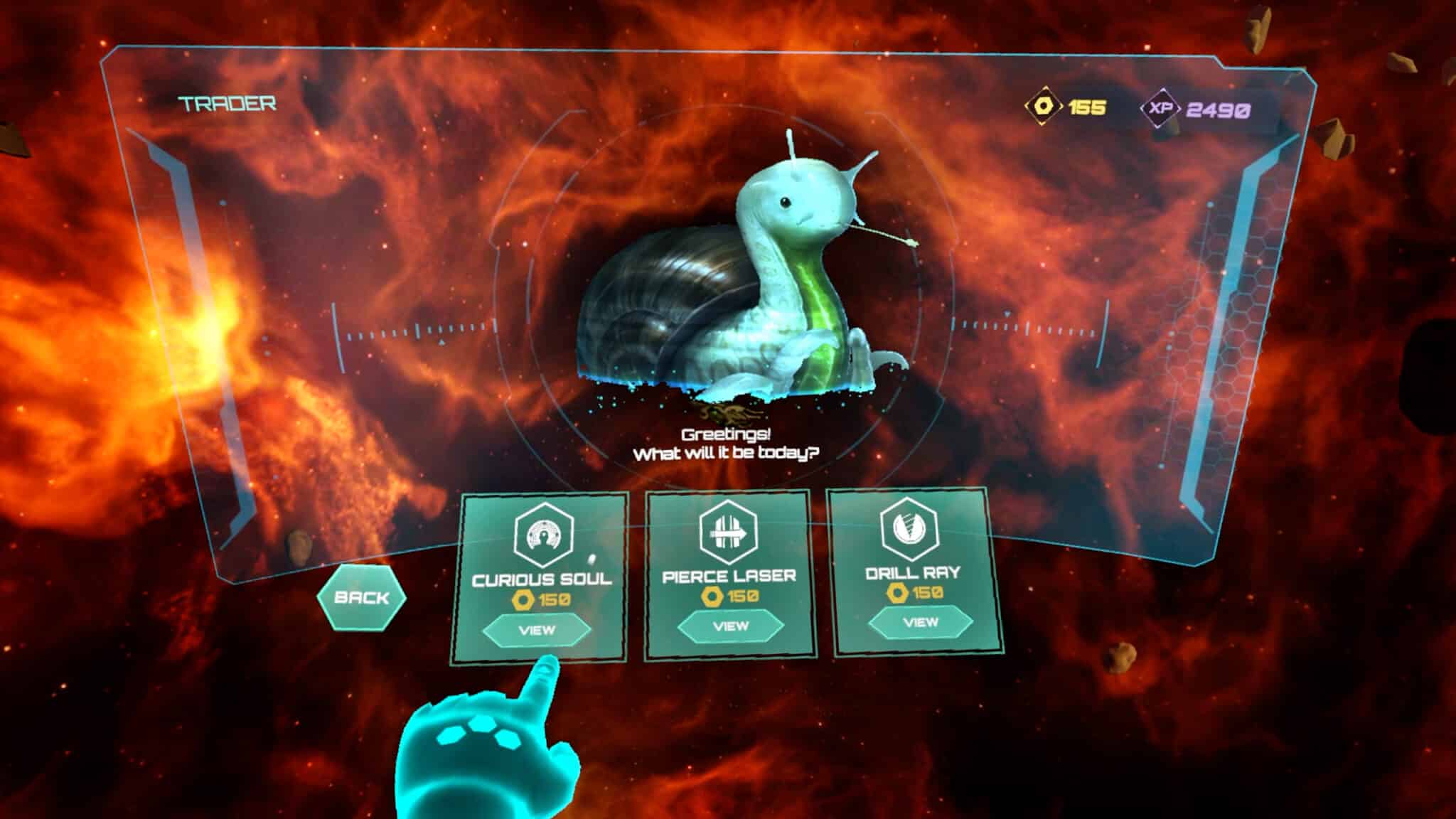
Ghost Signal also includes asynchronous online features, like finding the abandoned ships of other players mid-run to give you a new power-up. However, I didn’t experience what Smith calls the “main feature” of this, the ‘Daily Journey.’
“You get a global leaderboard and local leaderboard for your friends. A new map is generated every day, which is the same for everybody,” Smith reveals. “We can challenge each other, you get scored depending on how far you get, and then you’ll rank on this leaderboard.”
On the topic of a PC VR or PSVR 2 port, Smith doesn’t dismiss the idea but confirms it isn’t a current priority. “We’re not closing any doors, but right now, we’re focusing on the Quest 2.”
Ghost Signal: A Stellaris Game arrives on March 23 for the Meta Quest platform.

